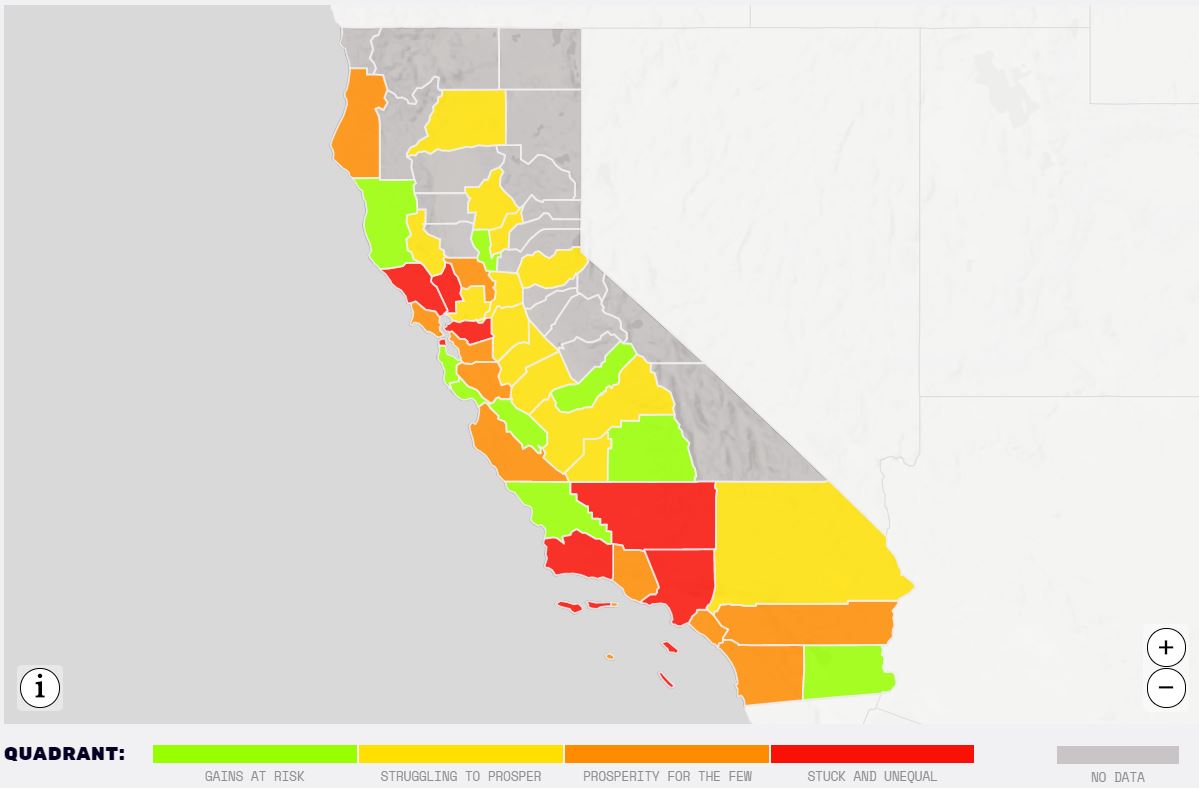
Statistics on low-income adults in food-secure households from the California Health Interview Survey are now available on RaceCounts.org. These pooled estimates, from the years 2011-18, speak to the challenges low-income adults have in meeting basic needs. In this case, low-income is defined as living in households earning less than 200% of the federal poverty level.
Performance: Statewide, only 58.4% of low-income adults lived in food-secure households between 2011 and 2018. Placer County, where 70.6% of low-income adults lived in food-secure households, had the highest rate of food security. Santa Barbara County had the lowest rate, with only half (50.3%) of low-income adults able to afford enough food.
Disparity: Alameda County produced the most racially disparate outcomes for food security. Black adults were 18% less likely to live in food-secure households than Asian adults, the racial group with the highest rate of food security. Latino adults were 13.6% less likely to live in food-secure households than Asian adults.
Impact: On average, 5.9 million low-income adults in California lived in food-secure households each year between 2011 and 2018. Latino/as made up 53% of these adults. Click here for data.